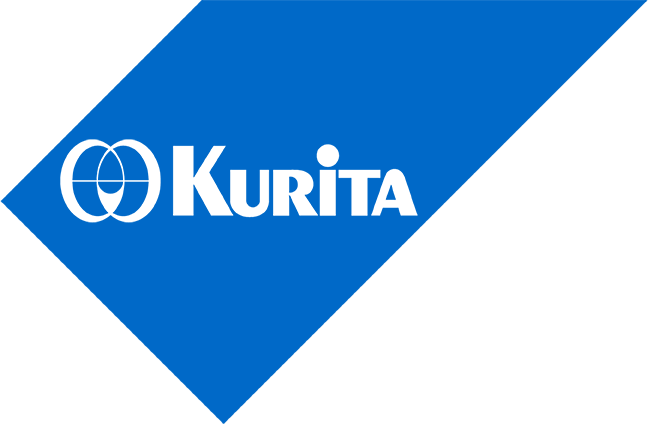Reverse osmosis (RO) systems function similarly to boilers and cooling towers by increasing the concentration of dissolved salts in the feedwater. As pure water permeates through the RO membrane, salts are retained, resulting in a concentrated stream. When the solubility limits of specific salts are exceeded, scaling may occur on the membrane surface or within its flow channels.
Scale formation typically begins at the tail end of the RO system, impacting on the final elements that process the water before it exits as concentrate. This accumulation leads to an increased pressure requirement to maintain permeate flow rates and can elevate permeate conductivity at the system's end. Performance restoration necessitates cleaning with an acidic solution; however, silica and sulfate scales may require specialized high pH cleaning agents.
Timely intervention is crucial as scale is highly abrasive and can degrade the rejection layer of the membrane, leading to long-term performance loss. Prompt removal helps minimize this risk. Should cleaning fail to restore functionality, membrane replacement becomes necessary.
For most water sources, scale prevention is manageable by employing one or more of the following treatment methods:
- Acid injection
- Water softening
- Scale inhibitor dosing (antiscalant)
The appropriate chemical approach depends on the source water’s composition, temperature, pH, and required recovery rates, which can be modeled using Kurita’s AdvisorCi software.
Acid injection effectively mitigates calcium carbonate scaling but provides limited protection against sulfate or silica scaling; thus, specialty antiscalants are often required for high-recovery applications with elevated levels of these constituents. Process variables — including pH and temperature — must be carefully considered during modeling as they influence the saturation points of common scaling compounds.
A key consideration when using acid injection is the potential generation of carbon dioxide (CO2), which readily passes through the RO membrane into the permeate. This CO2 may increase the ionic load on downstream ion exchange or deaeration equipment.
Lime softening, primarily utilized in RO recycle applications, can decrease hardness, alkalinity, and dissolved silica, thereby elevating recovery rates and reducing scaling risks. However, zeolite water softening, a more common softening method, utilizes strong-acid cation exchange resins regenerated with sodium chloride, allowing for higher calcium carbonate recoveries and the option of caustic addition upstream of the RO. The ability to raise the feedwater pH facilitates CO2 removal and expands silica saturation limits.
The most cost-effective scale prevention strategy, where applicable, is scale inhibitor injection. These inhibitors, like those used in boiler and cooling tower operations, effectively prevent crystal formation, enabling salts to leave the system via the concentrate stream even when operating above typical saturation thresholds — if conditions remain within AdvisorCi projection guidelines. It is vital to RO process, when using antiscalant chemistry, to flush supersaturated salts from the system upon shutdown, using either permeate or low-pressure feedwater displacement.
Early RO industry scale inhibitors – often simple polymers – offered minimal dispersant capabilities, particularly in waters containing iron or manganese, leading to premature cartridge filter blockage and membrane fouling. Additionally, early formulations sometimes promoted calcium phosphate scaling due to their phosphorus content. Modern formulations have been able to resolve these issues. Fig.1 shows a Chromatic Elemental Image (CEI) of a calcium phosphate scale formed on a membrane surface from a common basic antiscalant formulation.
Kurita’s Vitec antiscalant products combine advanced polymers and phosphonates, tailored to achieve specific recovery goals while maximizing scale and metal dispersion control. These synergistic blends deliver superior performance in scaling prevention, including dispersion of metals such as iron, manganese, and aluminum.
With the correct application of the chosen scale prevention technique and accurate AdvisorCi modeling, scale formation in RO systems can be avoided.
For further information on reverse osmosis systems, chemical solutions, or service offerings, please contact Kurita.
 About the author: Ken Robinson is the director of applied technologies at Kurita, specializing in membrane technology. He graduated with distinction from St. Lawrence College with degrees in both marine engineering technology and mechanical engineering technology. With four decades of experience dedicated to membrane technology and its integration into water treatment, Ken is an active member of both the American Water Works Association (AWWA) and the American Membrane Technology Association (AMTA).
About the author: Ken Robinson is the director of applied technologies at Kurita, specializing in membrane technology. He graduated with distinction from St. Lawrence College with degrees in both marine engineering technology and mechanical engineering technology. With four decades of experience dedicated to membrane technology and its integration into water treatment, Ken is an active member of both the American Water Works Association (AWWA) and the American Membrane Technology Association (AMTA).

